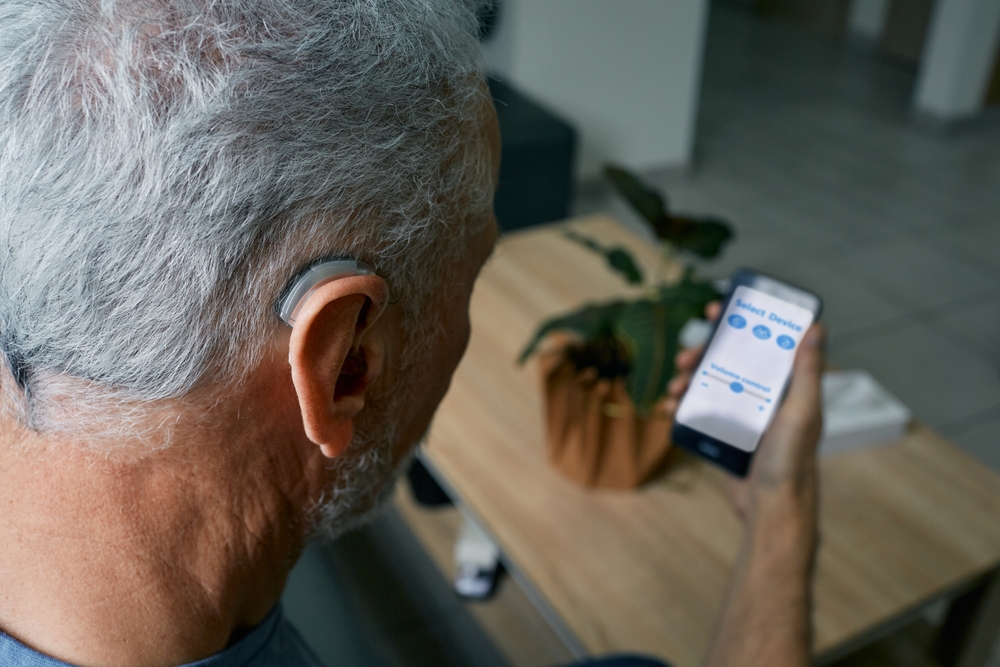If you wear hearing aids, you know how annoying audio feedback can be. Feedback is the squealing or whistling that occurs when you least expect it – startling you, as well as those around you. But do you know how to prevent hearing aid feedback?
You’re hugging your daughter. You’re putting your hearing aids in. You wave your hand next to your ear as you enthusiastically tell someone about your recent fishing trip.
Occasional feedback is normal, but you can prevent hearing aid feedback with the following eight tips.
1. What causes hearing aid feedback?
Whenever you need to fix a problem, it pays to first understand what you’re dealing with. Your hearing aids are a tiny, technologically-advanced sound system. You’ve probably heard sound system feedback from the huge speakers at a play, seminar, concert, or recital.
The entire room cringes when they hear it.
Your hearing aids include a microphone to pick up sounds and a speaker to relay sounds to your ears. Feedback is caused when sound leaves the speaker, and instead of going into your ear, it feeds back into the microphone. This creates a sound loop that overwhelms the digital technology in even the most advanced speakers or hearing aids.
If this feedback is subtle, it may sound like a persistent whistle. If it’s more significant, the hearing aid will squeal like it’s gone haywire.
2. Make sure your hearing aids are properly positioned
If you’re not wearing your hearing aids as intended, or one has come loose, you will hear feedback because the microphone is now exposed to the sound coming from the speaker.
3. Turn down the volume
Sometimes hearing aids are just too loud. Some sound has to be able to leave your ear to prevent hearing aid feedback. See if lowering the volume helps.
4. Have your ears professionally cleaned
This isn’t an insult. You are inserting a foreign object into your ear when you put a hearing aid in. Some people’s ears may respond by producing more wax to protect your inner ears. When you insert a hearing aid into your ear, it pushes and compacts the wax deeper inside your ear.
If you’re experiencing frequent feedback, one of the first things to do is have a hearing specialist evaluate your wax buildup. If the wax needs to be removed, it’s a very basic in-office procedure. Talk to your hearing specialist about how to safely remove wax at home and prevent new buildup.
5. Clean your hearing aids regularly
To optimize performance, hearing aids should be gently wiped off each time you remove them. Wax can build up on the hearing aid dome (also called the earmold or mold). When it does, the wax blocks the normal flow of sound.
If the dome is really dirty or damaged, consider replacing it. The dome is a soft, inexpensive piece of silicone. It helps the hearing aid fit snuggly in your ear to reduce feedback.
It should be replaced as needed to prevent hearing aid feedback and enhance your personal hearing experience.
6. Consider a different dome or mold
During the hearing aid fitting, a hearing specialist will measure your ear to determine the mold size you need. But hearing mold sizes aren’t an exact science.
A hearing specialist will customize the hearing aid during the fitting. The hearing specialist will balance the patient’s comfort with the fit that will produce the least feedback.
It’s possible the fit can be improved. Larger, closed domes take additional time to get used to. They feel uncomfortable at first, but they significantly reduce feedback. If you’re getting a lot of feedback from your hearing aids, you may want to consider a larger dome size.
Check with your hearing specialist to see if your hearing aids need an adjustment.
7. Consider a new tube
Your hearing aid tubes may be too short, which will cause the hearing aids to come loose or rest incorrectly in your ears. If you have new hearing aids, your hearing specialist may replace the tubes for free. If not, replacing the tubes is still a very inexpensive fix for an annoying problem.
8. Ask about feedback cancellation (FBC) technology
Your hearing aids are very high-tech devices. They do more than receive and transmit sound. Hearing aids have the ability to process sound. They can change the sounds that come through the speakers to optimize your hearing experience.
An FBC system can identify the specific frequencies associated with feedback. It can then digitally cancel those frequencies so they’re not transmitted to your ears, even though the microphone picked up those sounds.
If you’re not getting the best possible hearing experience from your hearing aids, don’t stop wearing them. Talk to a hearing specialist about preventing hearing aid feedback. You’ll be glad you did.



